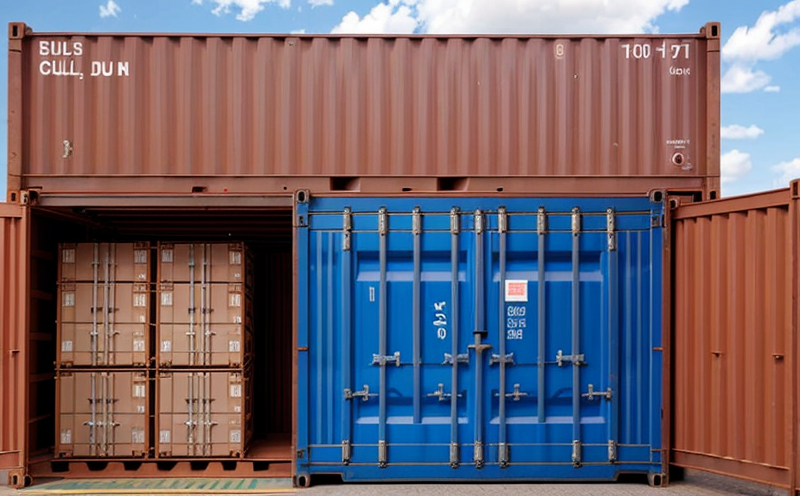USP Extractables Testing of Packaging Materials
The United States Pharmacopeia (USP) Extractables and Leachables testing is a critical process in ensuring that pharmaceutical products are safe for patients. This service focuses on the extraction and analysis of substances from packaging materials, which might leach into the drug during storage or administration.
Packaging plays an essential role in protecting pharmaceutical products from environmental factors such as light, moisture, and temperature variations. However, certain elements within the packaging can potentially interact with the drug substance or product, leading to contamination or degradation. USP Extractables Testing is designed to identify these potential risks by simulating real-world conditions under which the packaging might come into contact with the drug.
The testing typically involves placing a representative sample of the packaging material in an appropriate solvent that mimics the storage and transport environment. The solvent extracts any chemicals or additives from the material, which are then analyzed for their composition and quantity. This process adheres to strict guidelines outlined by USP General Chapter
The extracted chemicals are analyzed using a variety of analytical techniques such as high-performance liquid chromatography (HPLC), mass spectrometry (MS), and atomic absorption spectroscopy (AAS). These methods provide detailed information about the chemical composition, concentration, and potential risks associated with each extractable. This data helps in assessing whether the packaging material is suitable for use in pharmaceutical applications.
The testing process requires a high level of precision and attention to detail. Specimen preparation involves selecting representative samples of the packaging materials that accurately reflect their intended use. The choice of solvent, temperature, and duration of contact are carefully controlled to simulate actual storage conditions as closely as possible. The specimens must be stored under these conditions for an appropriate period before extraction begins.
Once extracted, the chemicals are purified and concentrated if necessary. This step ensures that even trace amounts can be accurately detected during analysis. Following purification, the samples undergo various analytical procedures to identify and quantify any extractable substances. It is important to note that not all materials will yield significant extractables; some may show minimal or no extraction at all.
After obtaining quantitative data on the extracted chemicals, the next step is to evaluate their potential impact on the pharmaceutical product. This involves comparing the identified compounds against a list of known problematic substances provided by regulatory agencies like USP. If any harmful or allergenic materials are detected, further investigation into the source and extent of contamination would be necessary.
The results of this testing play a crucial role in maintaining compliance with international standards such as USP General Chapter
The findings from this testing also contribute to continuous improvement efforts within a company's quality assurance program. By identifying potential issues early on, manufacturers can implement corrective actions to prevent similar problems in future batches or during commercial distribution.
Benefits
Prioritizing USP Extractables Testing offers numerous advantages for pharmaceutical companies committed to maintaining high standards of quality and safety. Firstly, it helps in preventing contamination risks that could arise from interactions between the packaging materials and the drug substance or product.
Secondly, this testing supports regulatory compliance by ensuring adherence to stringent requirements set forth by organizations like USP. This not only protects your company against penalties but also enhances its reputation among stakeholders including patients, healthcare providers, and regulatory authorities.
Thirdly, early detection of potential issues through extractables testing allows for proactive measures to be taken during the design phase of new products or processes. This can lead to cost savings by avoiding costly recalls later on due to unforeseen problems with packaging materials.
In addition, compliance with these tests demonstrates a commitment to excellence in manufacturing practices which fosters trust among customers and partners alike. Such integrity strengthens relationships built upon shared values around product quality and patient safety.
Customer Impact and Satisfaction
Prioritizing USP Extractables Testing has a direct positive impact on customer satisfaction by ensuring the highest standards of drug purity and effectiveness. When packaging materials do not interact with the active ingredients in medications, patients receive treatments that are safe and efficacious as intended.
Moreover, meeting regulatory requirements through rigorous testing builds trust between pharmaceutical companies and their customers. This trust translates into increased loyalty among consumers who know they can rely on your products to meet strict safety guidelines.
Additionally, successful completion of these tests contributes positively towards maintaining a positive brand image which is crucial in today's competitive market environment where reputation plays a significant role in gaining market share.
Environmental and Sustainability Contributions
Incorporating USP Extractables Testing into your quality assurance protocols also supports environmental sustainability efforts. By identifying potential contaminants early on, companies can take steps to minimize waste by selecting more environmentally friendly materials that do not pose risks during storage or transport.
This approach aligns with broader initiatives aimed at reducing the carbon footprint of pharmaceutical manufacturing processes. It promotes responsible use of resources and encourages innovation in sustainable packaging solutions which ultimately contribute towards achieving global sustainability goals.





